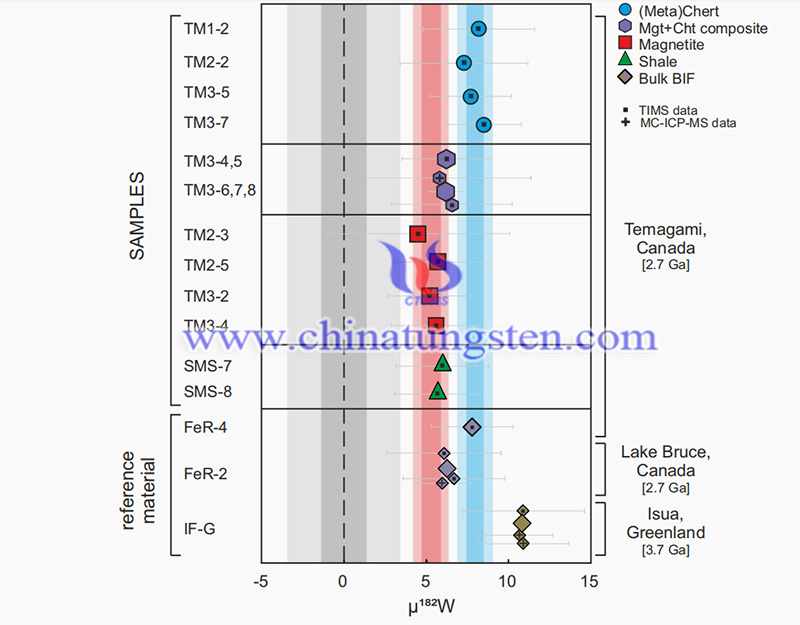Tungsten Isotopes Provide Insights Into Co-Evolution of Earth's Mantle and Continents
- Details
- Category: Tungsten's News
- Published on Friday, 27 May 2022 22:38
A recent study demonstrates that tungsten isotopes (182W) in banded ferruginous strata can serve as a new geochemical archive and that 182W can trace the evolution of both the mantle and the continents throughout Earth's history. This provides new opportunities to better understand the Precambrian Earth.
Radiogenic isotope systems are important geochemical tools to unravel geodynamic processes on Earth. Applied to ancient marine chemical sediments such as banded iron formations, the short-lived 182Hf-182W isotope system can serve as crucial instrument to decipher Earth’s geodynamic evolution.

(Source: Mundl-Petermeier/ Nature Communications)
To investigate how the Earth's early mantle developed, the short-lived hafnium isotope (182Hf ) - tungsten isotope (182W) system has previously been the focus of attention: 182W indicates how many strong meteorites impact the Earth received at the end of its formation, and how quickly the Earth's mantle mixed and homogenized with these meteorite components throughout Earth's history.
Currently, Andrea Mundl-Petermeier and Sebastian Viehmann of the Department of Lithospheric Research at the University of Vienna and colleagues from the University of Cologne and Jacobs University Bremen, have discovered a new geochemical profile of tungsten isotopic signatures in banded iron formations (BIFs), which formed mainly during the Precambrian, i.e., 3.8 billion to about 540 million years ago.
Using 2.7 billion-year-old iron layers from the Temagami Greenstone Belt in Canada, the team was able to reconstruct seawater-deposited iron- and silica-rich layers, which can record the evolution of both the Earth's mantle and crust. Using the most advanced instrumentation available, the team obtained high-precision isotopic measurements of individual bright quartz and dark iron layers.
Andrea Mundl-Petermeier of the Lithospheric Research Division said, "With the help of high-precision measurement methods, we were able to screen slight but significant differences in the 182W of individual strata. This new approach addresses a long-standing question about the evolution of the mantle and crust from an oceanic perspective: banded iron ore was formed by chemical deposition in the ocean." Geologist Sebastian Viehmann explains, "Thus, the BIF studied from the Temagami region directly represents the chemistry of seawater 2.7 billion years ago, and we are looking at the Earth at that time from an oceanic perspective."

(Source: Mundl-Petermeier/ Nature Communications)
The study titled “Early Earth: Tungsten isotopes in seawater provide insights into the co-evolution of Earth's mantle and continents: Iron formations as new geochemical archives for the evolution of the early Earth.” has been published in Nature Communications, 2022; 13 (1). The study was carried out by A. Mundl-Petermeier, S. Viehmann, J. Tusch, M. Bau, F. Kurzweil, and C. Münker.
- Tungsten Manufacturer & Supplier, Chinatungsten Online: www.chinatungsten.com
- Tungsten News & Prices of China Tungsten Industry Association: www.ctia.com.cn
- Molybdenum News & Price: news.molybdenum.com.cn
- Tel.: 86 592 5129696; Fax: 86 592 5129797; Email: sales@chinatungsten.com



 sales@chinatungsten.com
sales@chinatungsten.com